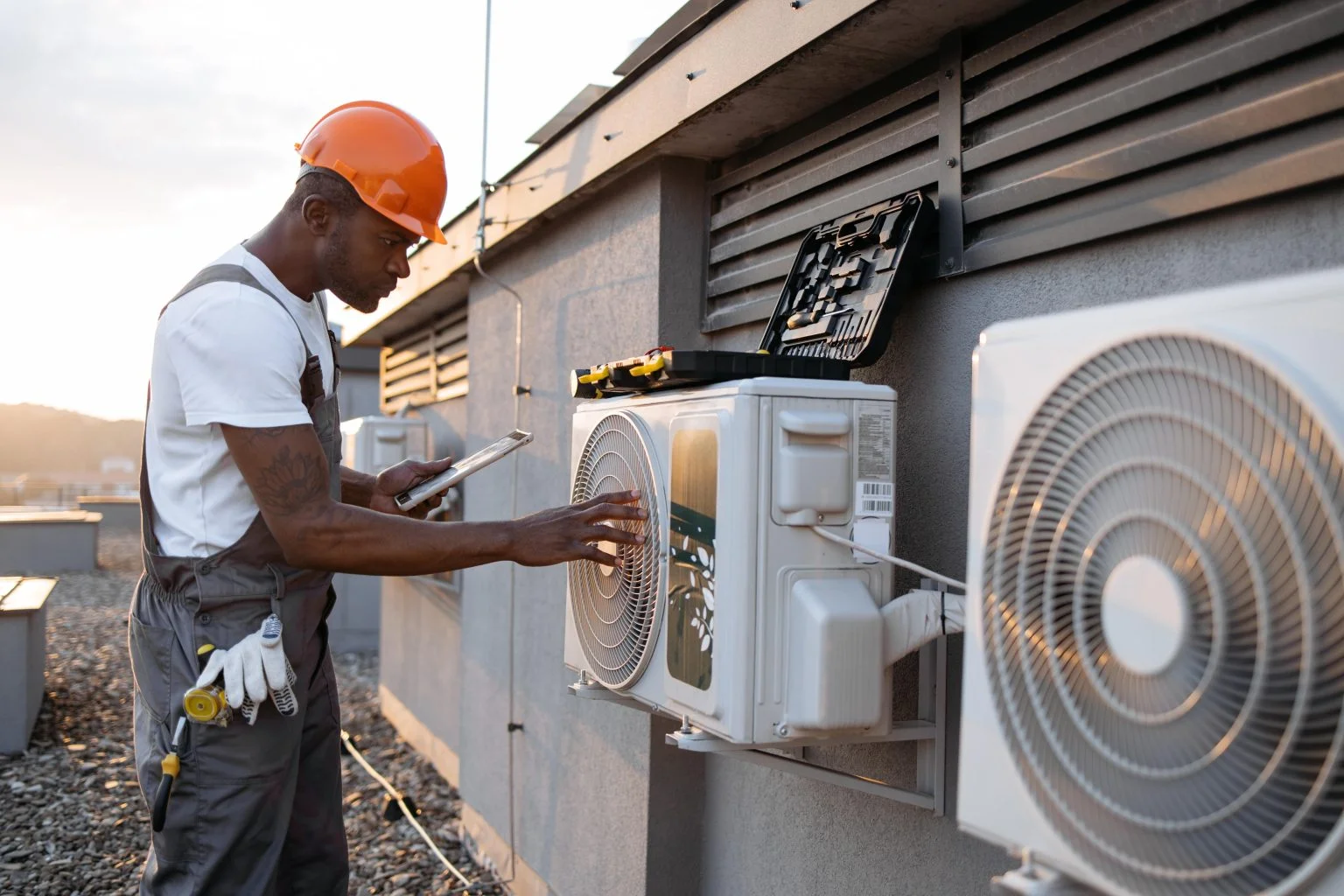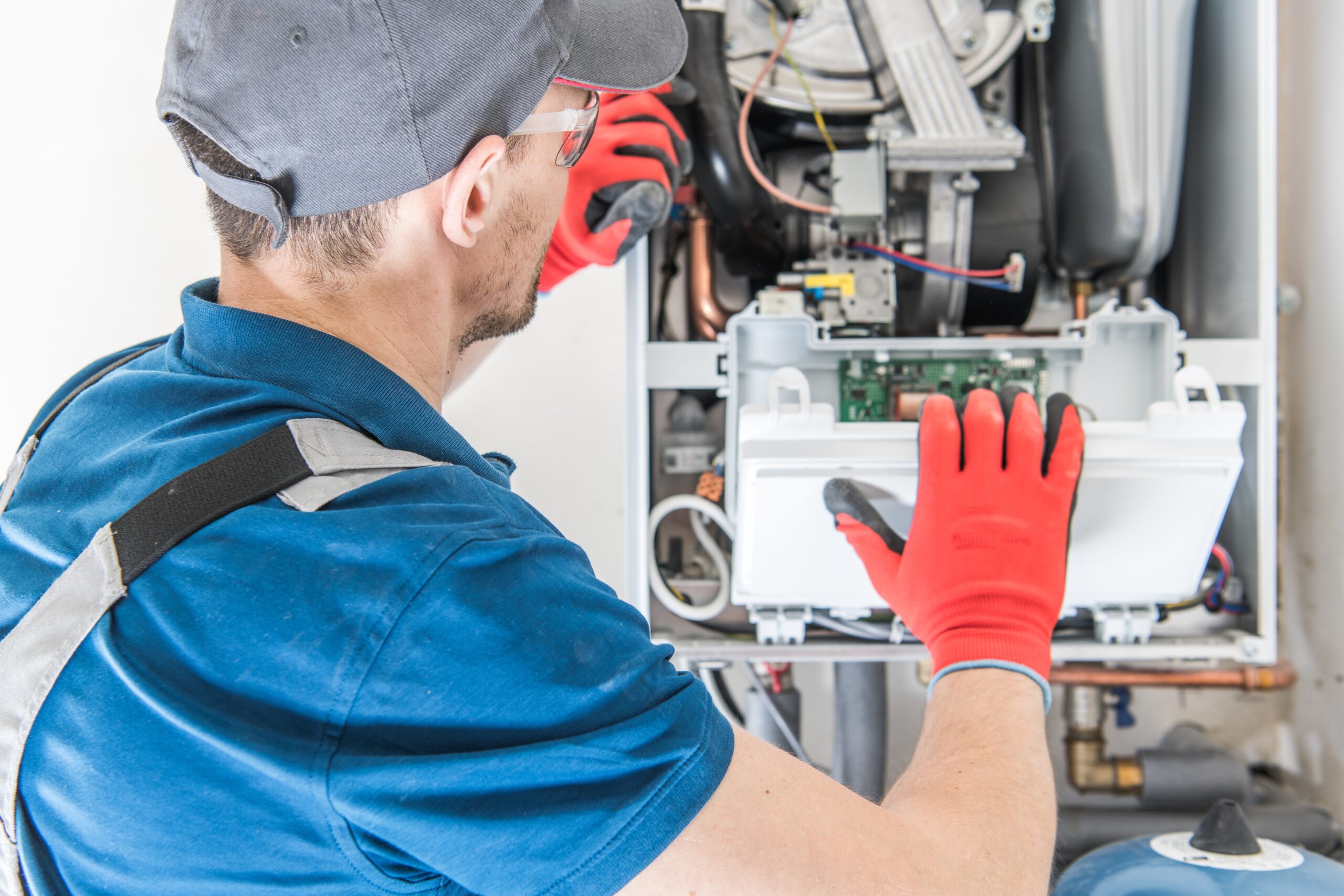Exactly How a Heatpump and Furnace Collaborate to Enhance Your Home's Heating Effectiveness
Comprehending exactly how a warmth pump and heating system job with each other is important for property owners seeking reliable home heating options. Each system has its toughness, offering a well balanced method to home comfort. The warmth pump stands out in moderate temperature levels, while the heating system supplies fast heat throughout extreme cold. This synergy not just lowers power expenses however likewise improves the lifespan of both home appliances. What elements affect this collaboration, and exactly how can house owners maximize their advantages?
Recognizing Warmth Pumps: How They Work
Many people might be unfamiliar with their internal functions, heat pumps play a vital role in contemporary home heating systems. These gadgets operate by moving heat from one place to another, making use of the concepts of thermodynamics. In cooler months, a heat pump extracts heat from the outdoors air, ground, or water, and transfers it inside your home to warm up the home. Conversely, during warmer months, it can turn around the process, working as an ac unit by getting rid of heat from inside to the outside.Heat pumps are composed of an evaporator, condenser, growth, and compressor shutoff. The refrigerant within the system soaks up heat as it vaporizes at reduced temperature levels and pressures. The compressor then boosts the pressure and temperature level of the cooling agent, allowing it to launch warmth as it condenses. This reliable process can substantially decrease power intake compared to standard home heating methods, making warmth pumps a lasting choice for environment control in homes.
The Role of Furnaces in Home Heating
Furnaces play a vital function in home heating by providing a dependable resource of heat throughout the cooler months. They run by generating warm with combustion or electric resistance, distributing it throughout the home using ducts or radiant systems. The performance of a heater is usually determined by its Annual Fuel Utilization Effectiveness (AFUE) rating, which indicates how successfully the device transforms fuel right into heat.Furnaces can make use of various power sources, consisting of all-natural gas, propane, power, or oil, allowing house owners to pick the most ideal alternative for their demands. Unlike warm pumps, which may struggle in extreme cold, heaters keep constant performance, guaranteeing that indoor temperature levels continue to be comfy no matter exterior conditions. Additionally, modern-day heating systems frequently come geared up with sophisticated technology, such as variable-speed blowers and smart thermostats, boosting their performance and responsiveness. This flexibility makes heaters a vital element in all-inclusive home heating strategies.

Advantages of Using Both Equipments With Each Other
Combining the toughness of both furnaces and warmth pumps can lead to a more effective and effective home heating remedy. Utilizing both systems enables home owners to benefit from the heatpump's energy effectiveness during milder temperature levels while depending on the heater for more extreme cold problems. This twin strategy can considerably minimize energy costs, as heat pumps eat less power than standard home heating methods when temperatures are moderate.Additionally, using both systems with each other can boost comfort degrees in the home. Heatpump can supply regular, also home heating, while furnaces can quickly raise ambient temperature levels when needed. Furthermore, the combination of both systems can prolong the lifespan of tools by lowering wear and tear on each device, as they share the work. Ultimately, house owners can enjoy a well balanced, cost-efficient heating remedy that readjusts flawlessly to varying climate condition, ensuring a cozy and inviting home throughout the winter season.
Just How Warm Pumps and Furnaces Enhance Each Other
They develop a complementary home heating system that makes the most of performance and comfort when property owners integrate warm pumps and furnaces. Heatpump operate by transferring warm from the outdoors air or ground, making them very efficient in modest climates. They succeed during milder temperatures, providing cost-effective home heating. Alternatively, heaters create heat through combustion or electrical resistance, providing solid, instant heat during severe cold conditions.The combination of these 2 systems enables for dynamic modifications based upon temperature level changes. Throughout warmer months or milder wintertime days, the heatpump can take the lead, conserving energy and lowering prices. As temperature levels decrease, the heater can seamlessly engage, ensuring constant warmth throughout the home. This synergy not only maximizes power usage however also boosts the life-span of both systems, as each unit operates within its optimal performance range. With each other, they create a balanced atmosphere that adjusts to differing environment needs.
Maximizing Performance: Tips for Homeowners
Home owners can improve their heating efficiency with several useful approaches. Establishing a regular maintenance routine, integrating clever thermostat innovation, and applying effective insulation and securing solutions are vital actions. These actions not just improve convenience however additionally reduce energy expenses.
Routine Upkeep Schedule
To guarantee optimal heating performance, establishing a regular upkeep routine is essential for any home. House owners should prioritize routine evaluations of both heatpump and heating systems to establish peak performance. This consists of altering air filters each to three months, as clogged up filters can significantly lower performance. In addition, organizing specialist maintenance at the very least when a year permits technicians to recognize and address possible issues before they escalate. House owners need to likewise clean the heatpump's outside device to stop debris accumulation that can prevent airflow. By sticking to a routine maintenance routine, house owners not just boost their furnace' effectiveness but likewise extend their life expectancy, bring about greater convenience and reduced energy expenses throughout the colder months.
Smart Thermostat Combination
Incorporating a smart thermostat right into a home heating system can considerably improve energy effectiveness, particularly as it permits specific control over temperature level setups. These gadgets can discover the property owner's timetable and preferences, immediately changing the temperature level to optimize convenience while lessening power use. For example, they can lower heating throughout times when the home is unoccupied, minimizing unnecessary usage. Numerous smart thermostats also offer real-time energy usage information, allowing property owners to make informed choices about their home heating habits. Additionally, remote accessibility using smart device applications enables customers to change setups from anywhere, ensuring the home is cozy upon return. Overall, clever thermostat integration not only enhances convenience yet considerably adds to energy savings and effectiveness.
Insulation and Sealing Solutions
Smart thermostats play a critical function in power effectiveness, but their efficiency can be substantially improved by correct insulation and sealing solutions. Home owners should focus on insulating attic rooms, walls, and floors to minimize warm loss. Premium insulation materials, such as spray foam or fiberglass, can significantly improve thermal resistance. Additionally, securing voids around home windows, air ducts, and doors avoids cool air infiltration and warmth retreat. Weatherstripping and caulking work methods for addressing these leakages - heat pump installation ooltewah tn. Regular inspections for air leaks, in addition to making use of blower door tests, can assist recognize problem locations. By purchasing insulation and securing, house owners can maximize the performance of their furnace, inevitably leading to minimized energy consumption link and reduced energy expenses
Common Myths Concerning Warmth Pumps and Furnaces
What misunderstandings surround warmth pumps and heating systems? Many individuals incorrectly think that heatpump are inefficient in cooler environments. In truth, contemporary heatpump are developed to operate successfully even in reduced temperature levels, supplying trusted heating throughout winter months. An additional typical misconception is that furnaces are always more effective than heatpump. This depends on the particular power resources and efficiency ratings of the systems in inquiry. Some may also assume that making use of both systems all at once is unnecessary, yet as a matter of fact, this combination can optimize heating efficiency, specifically throughout extreme climate problems. Furthermore, individuals usually presume that warm pumps call for continuous upkeep, when in truth, they have comparable upkeep requires to traditional furnace. By disproving these myths, house owners can make even more enlightened choices regarding their home heating options, ultimately bring about boosted comfort and energy performance in their homes.
Upkeep Considerations for Combined Systems

Regularly Asked Inquiries
Can Warm Pumps Job Properly in Extremely Cold Climates?
Warm pumps can have a hard time in exceptionally cold climates because of lowered efficiency and heat extraction constraints. Advancements in technology have actually led to designs created for much better efficiency in such conditions, enhancing their practicality in rough environments.
For How Long Do Warmth Pumps and Furnaces Typically Last?
Heatpump normally last 15 to 20 years, while heaters have a lifespan of 15 to 30 years. Routine upkeep can extend their longevity, ensuring efficient operation and decreasing the demand for early replacements.

What Is the Average Price of Putting Up Both Systems?
The typical cost of mounting both a warmth pump and a furnace generally ranges in between $5,000 to $10,000 - heat pump service. Aspects affecting this cost include system size, setup complexity, and local labor prices
Are There Tax Obligation Motivations for Using Energy-Efficient Home Heating Solutions?
Numerous house owners ask about tax motivations for energy-efficient furnace. Various federal and state programs often supply refunds or debts, urging the adoption of lasting innovations to minimize power usage and promote environmental duty.
Exactly how Do I Pick the Right Size Heatpump and Heater?
Selecting the right size heat pump and heating system involves determining the home's square footage, considering insulation top quality, and reviewing regional environment. Consulting a professional can assure optimal system performance and power efficiency based on details demands. heat pump service. Comprehending just how a warm pump and heater job together is important for house owners looking for effective home heating remedies. In colder months, a heat pump essences warm from the outside air, ground, or water, and transfers it inside to heat the living room. When home owners incorporate warm pumps and furnaces, they pop over to these guys produce a complementary heating system that takes full advantage of performance and comfort. Warmth pumps run by transferring warmth from the outdoors air or ground, making them highly reliable in moderate environments. Warmth pumps can struggle in very cool environments due to decreased performance and warmth removal restrictions